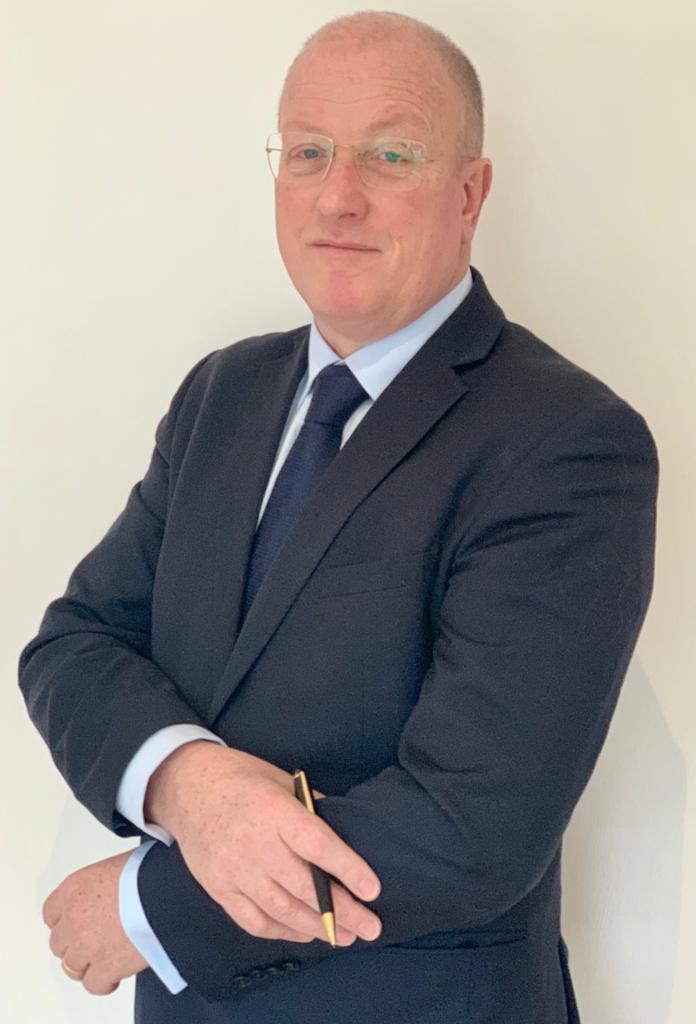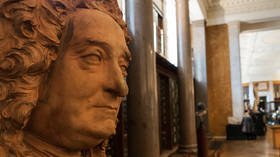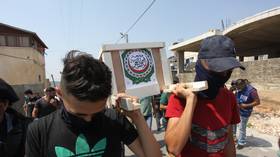A British colonial museum featuring toppled statues sounds like a great idea, but let’s create it with an open mind

A historian wants to open a museum focusing on Britain’s colonial past. This is a better idea than erasing the country’s history, as BLM wants, but his assertion that colonialists were war criminals reveals his true agenda.
The idea from a leading historian that the UK establishes a museum of colonialism is a welcome contribution to the debate that still rages, suggesting Britons today are just as guilty as their forebears for some of the less savoury acts in our history.
Let’s start this project today, but please, can we put the grown-ups in charge? Because Scottish historian William Dalrymple has suggested that when statues of dead white men with blood on their hands are placed on display in the museum, they should be identified as “war criminals” for the things they did.
Dalrymple is an expert on colonial India and evidently had Britain’s former commander-in-chief of India, Sir Colin Campbell, in mind when suggesting that particular move to his audience at the Jaipur Literature Festival in London.
He said: “Sir Colin Campbell’s statue stands in Clydeside but he is someone who sewed Sepoys (mutineering Indian soldiers serving under British command) into pig skins and made them lick up the blood in Bibighar before blowing them from the mouths of cannon.”
Then there was Major General Sir Henry Havelock, a Victorian-era commander in India, whose statue stands proudly on one of the four plinths in London’s Trafalgar Square. “Havelock did the same and murdered, between Campbell and himself, around 10,000 non-combatants in Lucknow and Cawnpore,” Dalrymple said, before adding, “these are people we would describe as war criminals anywhere else”.
Okay, maybe that would be the case in modern times. But before deciding on behalf of everyone else that you should blacken the names of these historical figures for eternity, applying contemporary mores and attitudes, surely a far more valuable exercise would be to give their deeds a clear and accurate historical context so people can make up their own minds?
Because – pun alert – Britain’s colonial past is not all black and white.
For while Dalrymple’s horror at the behaviour of Campbell and Havelock is perfectly understandable, maybe the fact that he spends most of the year living on a farm outside the Indian capital New Delhi means he feels that a grovelling apology is needed to make things right with his Indian hosts.
After all, he spends his whole life thinking about Britain’s colonial past in India. Don’t they?
Ironically, in trying to make amends in one part of the former British colonial empire, he risks upsetting those in another, who have already established their own Museum of British Colonialism. Set up in 2018, the MBC has a quite limited focus and declares itself “a joint UK-Kenyan project created to communicate a more truthful account of colonialism,” although that centres solely on the Mau Mau uprising of Kenya in the 1950s.
Also on rt.com Toppled UK slave trader statue replaced with figure of BLM protester. ‘Doesn’t reflect diversity, take it down,’ Twitter users sayWhile apparently largely inactive as an organisation and with only irregular postings on its website, a distinct leaning is apparent in the adulation afforded to the Black Lives Matter movement and prattling about a “moment of collective euphoria in a violent news-cycle” experienced as vandals in Bristol toppled the statue of Edward Colston, an English merchant who died nearly 300 years ago, and tossed it into the harbour.
If that is the infantile consideration the Museum of British Colonialism decides to afford figures of Britain’s rich colonial past, then it is certainly time to think again about the proposed institution. Because this sort of ‘activist’ approach is like talking to a child as they try to lay blame on someone else for how a large smear of paint appeared on a bedroom wall.
We all agree this is a bad situation. But just give us the full facts, and we can decide the context and how we feel about it ourselves without all the shouting and screaming and tears. One person’s war criminal is another’s military hero. Someone else’s slave trader is another’s successful philanthropist.
There are layers and nuances, untold stories and, yes, hidden horrors that will become apparent as our history retreats into the past. We should not prevent any of that from revealing itself, because an unknown history means ignorance of sins past and that creates a significant danger. That those sins will repeat themselves.
The museum idea is a good one. The British Museum can loan out those items it feels too queasy to put on public display in Bloomsbury, and we can have a comprehensive, objective and educational exhibition of our colonial past. Nothing missing.
Let’s get on with it. Oh, and somebody tell Dalrymple his idea’s not new.
Think your friends would be interested? Share this story!
The statements, views and opinions expressed in this column are solely those of the author and do not necessarily represent those of RT.
















